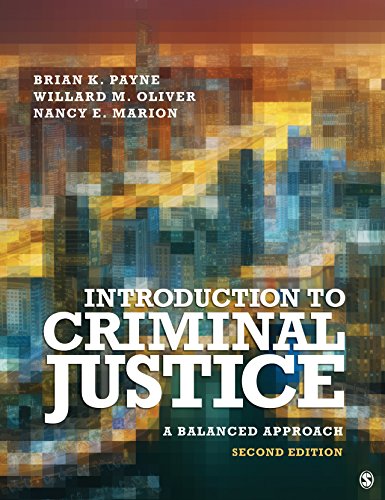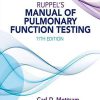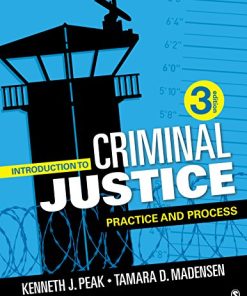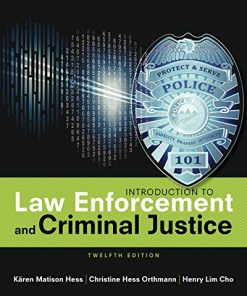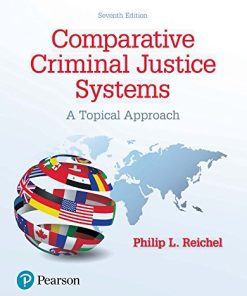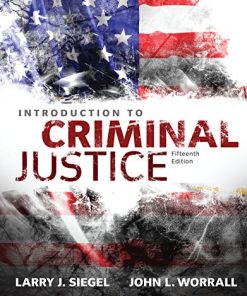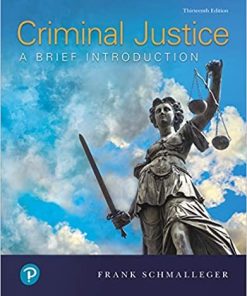Introduction to Criminal Justice: A Balanced Approach 2nd Edition, (Ebook PDF)
$50.00 Original price was: $50.00.$25.00Current price is: $25.00.
Introduction to Criminal Justice: A Balanced Approach 2nd Edition, (Ebook PDF) – Digital Instant Dowload.
Introduction to Criminal Justice: A Balanced Approach 2nd Edition, (Ebook PDF) – Digital Instant Dowload.
\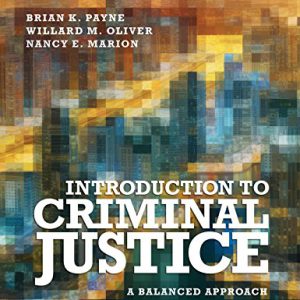
Product details:
- ISBN-10 : 1506389708
- ISBN-13 : 978-1506389707
- Author: Brian K. Payne (Author), Willard M. Oliver (Author), Nancy E. Marion (Author)
Introduction to Criminal Justice, Second Edition, provides you with balanced, comprehensive, and up-to-date coverage of all aspects of the criminal justice system. Authors Brian K. Payne, Willard M. Oliver, and Nancy E. Marion cover criminal justice from a student-centered perspective by identifying the key issues confronting today’s criminal justice professionals. You are presented with objective, research-driven material through an accessible and concise writing style that makes the content easier to comprehend. By exploring criminal justice from a broad and balanced perspective, you will understand how decision making is critical to the criminal justice process and your future career.
The fully updated Second Edition has been completely revised to include new studies and current examples that are relatable to today’s students. Two new feature boxes have been added to this edition to help you comprehend and apply the content. “You Have the Right to…” gives insight into several Constitutional amendments and their relationship with criminal justice today; and “Politics and Criminal Justice” explores current political hot topics surrounding the justice system and the debates that occur on both sides of the political aisle.
Table of contents:
PART I: FOUNDATIONS OF CRIMINAL JUSTICE
Chapter 1: Introduction to Criminal Justice The Criminal Justice System The Justice Process The Roles of Criminal Justice Just the Facts: Chapter Summary Key Terms Critical Thinking Questions
Chapter 2: Perspectives on Crime and Criminal Justice Research Legal Perspectives of Crime Social Perspectives of Crime Behavioral Perspectives of Crime Research in Criminal Justice Just the Facts: Chapter Summary Key Terms Critical Thinking Questions
Chapter 3: An Introduction to Measuring Crime and Crime Patterns Measuring the Extent of Crime Strategies Used to Measure the Amount of Crime Crime Patterns Just the Facts: Chapter Summary Key Terms Critical Thinking Questions
Chapter 4: An Introduction to Crime Typologies Why Study Criminal Justice and Crime Typologies? Violent Crime Property Crime Public Order Crime Crime Within Complex Organizations Juvenile Offending Just the Facts: Chapter Summary Key Terms Critical Thinking Questions
Chapter 5: An Introduction to Criminological Theory Why Study the Causes of Crime? Crime as a Product of Choice Crime as a Product of Biological Factors Crime as a Product of Social Factors Crime as a Product of Social Psychological Factors Crime as a Product of Cognitive Processes Just the Facts: Chapter Summary Key Terms Critical Thinking Questions
PART II: POLICING
Chapter 6: An Introduction to Policing: History and Structure Types of Societies and Policing The English System of Policing The American System of Policing Policing in America Today The Structure of Modern Police Departments Just the Facts: Chapter Summary Key Terms Critical Thinking Questions
Chapter 7: Police Strategies Police Strategy Studies Police Patrol Deployment Broken Windows Theory and Policing Community Policing Problem-Oriented Policing Targeted Policing Four Related Strategies CompStat Homeland Security and Policing Just the Facts: Chapter Summary Key Terms Critical Thinking Questions
Chapter 8: Issues in Policing External Issues Internal Issues Just the Facts: Chapter Summary Key Terms Critical Thinking Questions
PART III: THE COURTS
Chapter 9: An Introduction to the Courts: History, Structure, and Actors History of the Courts Types of Courts Federal Courts State Courts Actors: Courtroom Workgroup Technology Just the Facts: Chapter Summary Key Terms Critical Thinking Questions
Chapter 10: The Judicial Process Arrest/Booking The Charging Decision Pretrial Trial Sentencing Appeals Defendants’ Rights Just the Facts: Chapter Summary Key Terms Critical Thinking Questions
Chapter 11: Issues in the Courts Issues Stemming From Overcrowding Issues Related to Court Processes Legal Issues Related to the Courts Issues Related to Innovations in the Courts Just the Facts: Chapter Summary Key Terms Critical Thinking Questions
PART IV: CORRECTIONS
Chapter 12: An Introduction to Corrections: History, Structure, and Actors Goals of Punishment History of Punishment Structure of Corrections Actors Working in Corrections Just the Facts: Chapter Summary Key Terms Critical Thinking Questions
Chapter 13: Punishing Offenders in Prisons, Jails, and the Community The Incarceration Experience Releasing Inmates Back Into the Community The Structure of Probation and Parole Types of Alternative Sanctions Just the Facts: Chapter Summary Key Terms Critical Thinking Questions
Chapter 14: Issues in Corrections General Issues for Prisoners General Issues for Corrections Employees Issues Related to Working With Different Types of Offenders Issues Related to Punishment Strategies Learning About Corrections Just the Facts: Chapter Summary Key Terms Critical Thinking Questions
PART V: CONTEMPORARY CHALLENGES
Chapter 15: Current and Future Criminal Justice Issues International Issues Terrorism Cybercrime The Aging of the Criminal Justice System The Evolution of Criminal Justice Policies Concluding Remarks Just the Facts: Chapter Summary Key Terms Critical Thinking Questions
You may also like…
Uncategorized
Uncategorized
Administration and Management in Criminal Justice: A Service Quality Approach – Ebook PDF Version


